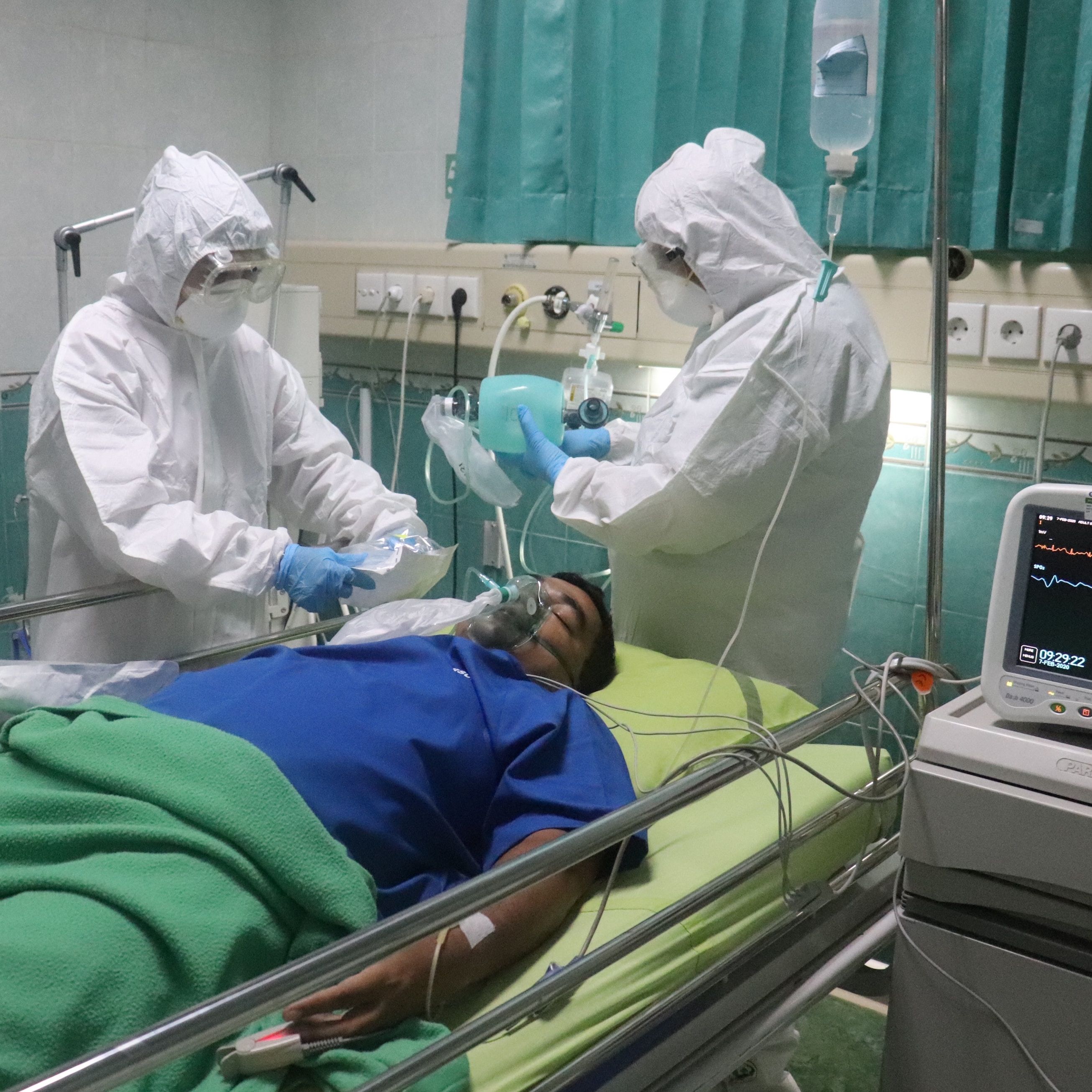Article
Chronic Liver Disease Linked to Significant Risk of COVID-19 Pneumonia, Death
Author(s):
International data show conditions including cirrhosis and alcohol-associated liver disease significantly drive the likelihood of critical illness and death in COVID-19 patients.
Credit: Unsplash / Mufid Majnun

Chronic liver disease is associated with an approximate 8-fold increased mortality rate from COVID-19 than the general population, according to new data.1
In retrospective, observational research from an infectious disease clinic in Belgrade, an international team of investigators reported conditions including hepatitis C virus (HCV) and alcoholic liver disease (ALD) were associated with increased rates of COVID-19-related mortality—while cirrhosis was considered an independent risk factor for death due to COVID-19.
Led by Nikola Mitrovic, of the department of hepatology and clinic for infectious and tropical disease at the University Clinical Center of Serbia, investigators sought the characteristics of patients with COVID-19 and chronic liver disease, as well as their associated risk factors in instances of severe outcomes. They noted that presence and influence of chronic liver diseases on the course of COVID-19 is still not consistently understood in research—nor has been the impact of the pandemic virus on patients’ liver disease.
“Prospective multicentric studies still underway indicate that persons with a terminal liver disease–cirrhosis, have a greater risk of poorer prognosis,” they wrote. “The exact mechanism of the negative influence on respiratory tract function remains the subject of research. Furthermore, it has not been fully elucidated whether the etiology of liver diseases have an influence on the course of COVID-19 and its outcome.”
The team conducted their retrospective observational study on patients with previously diagnosed chronic liver disease and a confirmed COVID-19 case being treated at Mitrovic’s clinic between March 2020 – March 2022. Eligible patients had any of the following conditions:
- Hepatitis B virus (HBV)
- HCV
- Autoimmune liver diseases (autoimmune hepatitis; primary biliary cholangitis [PBC]; primary sclerotizing cholangitis [PSC])
- ALD
- Non-alcoholic fatty liver disease (NAFLD)
- Chronic liver diseases of unknown etiology
Mitrovic and colleagues analyzed the severity of chronic liver disease and its associated comorbidities, the severity of COVID-19 and associated outcomes, as well as patient demographics. They analyzed COVID-19 severity in comparison with the severity of patients’ associated pneumonia and need for oxygen support by the following categories:
- Absence of pneumonia
- Mild pneumonia without need for oxygen support
- Middle severe pneumonia affecting <50% of lung parenchyma but with the need for oxygen support
- Severe pneumonia affecting ≥50% of the lung parenchyma and with the need for oxygen support
- Critically ill, treated in the ICU with required high flow oxygen support
The team identified 80 eligible patients with chronic liver disease who contracted SARS-CoV-2 in the 2-year observation window. Three-fourths (73.8%) of patients were male, and mean age was 55.5 years old. A majority of patients (61.2%) reported body mass index (BMI) in the range of 18.5 – 24.9 kg/m2.
Patients primarily were diagnosed with HCV or HBV (n = 27), followed by NAFLD (n = 24). Another 27 patients had liver cirrhosis. At the time of COVID-19 onset, 60% reported active liver disease; 65% had comorbidities that were known to influence COVID-19 severity and outcomes.
Only 6.2% of patients reported an absence of fever due to COVID-19. A significant majority (n = 74 [92.5%]) reported pneumonia due to the virus. Pneumonia cases were predominately middle-severe (40%), followed by mild (25%). More than a quarter (n = 22 [27.5%]) of patients reported severe pneumonia and/or critical illness.
Regarding treatments, 20 (25%) patients received antiviral therapy; 59 (73.7%) received a corticoid steroid treatment; 67 (83.8%) received an anticoagulant; and 68 (65%) received Vitamins C and D. Just 14 patients were vaccinated against SARS-CoV-2.
Chronic liver disease deterioration was observed in one-third (33.7%) of patients; 3 (3.8%) patients experienced decompensation, while all others reported a transaminases spike.
Duration of COVID-19 illness was a median 20.4 days. Most patients (72.5%) experienced a full recovery. Three reported a partial recovery with the need for post-discharge oxygen support, and 19 (23.7%) died from their disease.
Investigators noted that a majority of patients to report any of ALD, cirrhosis, increased transaminase values prior to COVID-19, or malignancy died versus those who recovered. The odds ratios (ORs) for liver cirrhosis (OR, 69.1; P = .001) and severe pneumonia (OR, 22.3; P = .006) were the greatest independent predictors for deadly outcomes in patients with chronic liver disease and COVID-19.
Independent of risks driven by SARS-CoV-2 infection, the US is embattled with chronic liver disease burden of late. Data from Harvard Medical School earlier this year showed ALD-associated deaths increased by more than 23% from 2019 to 2020—and were particularly burdensome to native subpopulations.2
Mitrovic and colleagues concluded in their own analysis that physicians must increase their awareness of the impact conditions including liver cirrhosis may have on the mortality risk of patients infected with COVID-19.
“The results obtained in this study will undoubtedly assist with the evaluation of COVID-19 patients who have CLDs and improve their risk stratification, which will ultimately influence the efficiency of treatment and lower mortality,” they wrote.
References
- Mitrovic N, Sabanovic M, Vujovic A, et al. Influence of chronic liver diseases on the course and outcome of COVID-19. PLoS One. 2023;18(7):e0288350. Published 2023 Jul 14. doi:10.1371/journal.pone.0288350
- Kunzmann K. Alcohol-Assisted Liver Disease Deaths Climbed During COVID-19. HCPLive. Published April 22, 2023. https://www.hcplive.com/view/alcohol-assisted-liver-disease-deaths-climbed-during-covid-19





